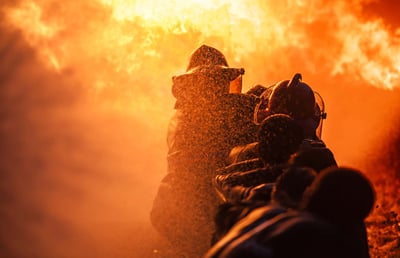 If you’re in this business long enough, you’re going to see any number of seemingly minor mistakes result in disastrous consequences. Businesses are under constant pressure to control costs, so it’s easy to understand why a building owner or facilities manager might try to save a few dollars. But, all too often, cutting those corners winds up costing far more than it would have to do the job right in the first place.
If you’re in this business long enough, you’re going to see any number of seemingly minor mistakes result in disastrous consequences. Businesses are under constant pressure to control costs, so it’s easy to understand why a building owner or facilities manager might try to save a few dollars. But, all too often, cutting those corners winds up costing far more than it would have to do the job right in the first place.
How Bad Can it Be?
Pretty bad. Things like broken pipe supports, punctured membranes and toppled equipment seem like nuisances when you realize what could happen when you try to cut corners. Here are just a few scenarios we’ve seen:
1. HAZMAT Leaks, Fires, and Explosions
Not all roof supports are made equal. Some materials just aren’t up to the task, whether because they’re not designed to support the weight they’re being asked to bear or because they’re not designed to withstand the elements. Severe weather, for instance, can quickly overwhelm sub-standard supports. And it doesn’t even have to be something like a tornado or a hurricane. A severe thunderstorm can have winds as high as 57.5 mph. That’s enough to knock inadequate roof supports over, dumping their loads onto your roof. And the damage can extend far beyond the injury to the roof itself. Broken pipes can lead to dangerous HAZMAT situations, exposing employees to toxic materials and possibly causing fires (or even explosions). Additionally, the cost of cleaning a hazardous materials spill can be enormous and will likely invite regulatory scrutiny.
And it doesn’t even take a severe storm to lead to a disastrous situation. Roof supports made from materials that aren’t designed for that purpose can degrade over time just from being exposed to sun, rain, heat, and cold. Inadequate materials aren’t the only problem that can cause roof supports to fail. Inadequate engineering is another big cause of support failures. Not having enough supports, having supports that are inadequate for the load they’re bearing, etc., can lead to the same failures caused by severe weather.
2. Catastrophic Leaks
Leaks always cause problems, but the problems can be much bigger than many people realize. First, there’s the possibility that the leak is so severe that it damages both the facility and its contents to the point of necessitating a work stoppage. But it doesn’t end there. Water leaking onto a piece of vital equipment can cause a short, damaging the equipment, shutting down operations, and possibly even causing a fire.
3. Voided Warranties
To add insult to injury, your roof warranty may not cover damage that results from inadequate roof supports. For smaller businesses, those costs can be insurmountable.
Mistakes to Avoid
All of the previously discussed catastrophes begin with installation. Now that you’ve learned what can happen when your supports go bad here are some installation mistakes to avoid:
1. Skipping Cleaning
A sound footing is essential for proper support. The base of your pipe support needs to rest on a clean surface, not one cluttered with pebbles or other debris.
2. Not Properly Leveling the Supports
Even if you’ve removed all debris from the roof surface, it’s still important to make sure the support is level and resting squarely on the surface. A support that isn’t level can rock during high winds, risking both broken pipes and damage to the roof itself.
3. Under-Engineering
It might be cheaper on the front end to engineer to the minimum requirements, or even to cut corners a little. But it can backfire exponentially if there’s a catastrophic failure.
4. Using Makeshift Supports
Safe, effective roof supports are the result of careful engineering that considers factors like weight distribution, material expansion and contraction, the wind, etc. Replacing a missing or broken support with a stack of bricks or an overturned bucket can change the dynamics of an entire system.
We understand the cost pressures you’re under. But the risks of cutting corners on your roof supports are too great to take the chance. Instead of a healthier bottom line, you could wind up with an inoperable facility, unwanted media coverage, and expensive lawsuits. Where would you rather spend your money?





